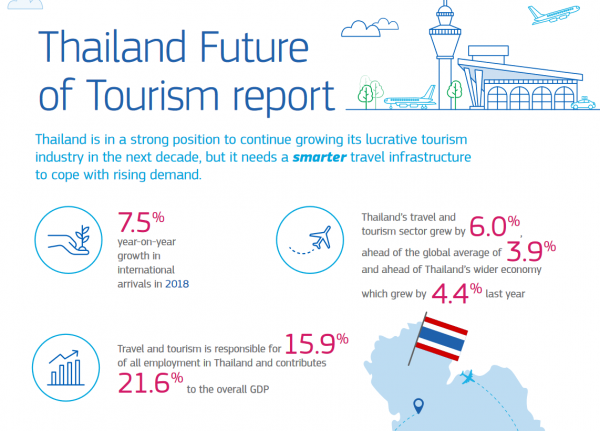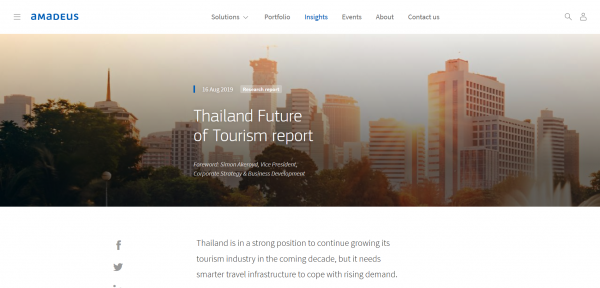BANGKOK 4 September 2019: Earlier this year national park authorities in Thailand confirmed Maya Bay on the island of Phi Phi would remain closed until 2021.
Phi Phi island and Maya Bay rose to fame following the box office hit ‘The Beach’ – starring Leonardo Di Caprio back in 2000.
Over-tourism ultimately forced the closure of Phi Phi in 2018 as daily visitors soared from 170 in 2008 to 3,500 in 2017. This increase in travellers has caused damage to the coral reef and surrounding marine life.

At Amadeus, we believe ‘Smart Tourism’ can help remedy these kinds of issues, and for Smart Tourism to be successful, collaboration is vital.
Knowing this, we have brought together leaders from Thailand’s Digital Economy Promotion Agency (DEPA) and the Pacific Asia Travel Association (PATA) to identify key areas of focus for Thailand’s tourism industry and to provide a roadmap for the decade ahead.
These areas of opportunity are outlined in the Amadeus report, ‘Thailand towards 2030 – Future of Travel & Tourism’.
The example of Maya Bay is a stark reminder of how over-tourism can put a strain on a country’s travel infrastructure.
Thailand has always had a flourishing travel and tourism industry with the sector responsible for 15.9% of all employment in the country and contributing 21.6% to the country’s GDP.

It goes without saying that closures such as ‘The Beach’ can dampen the long-term growth of Thailand’s tourism industry if not adequately tackled. But there is a solution that can help governments take adequate precautionary measures before such perilous situations arise in the first place.
Smart Tourism is the new mantra for success that provides the government, travel companies and tourist industries opportunities to use big data and relevant information to ensure destinations continue to be more liveable.
How Smart Tourism can help a destination
Attract the right traveller by having a better understanding of their preferences.
Facilitate traveller touchpoints along the entire travel journey.
Connect travellers with city infrastructure and commuter.
Create networks for a more seamless travel experience.
Serve travellers better by connecting data, travel providers and traveller touchpoints.
Thailand towards 2030 report focuses on four specific areas.
Thailand’s airports
Physical expansion of airports to deal with the surge in tourists is costly and time-consuming. By using smart tech, more effective passenger management can take place at airports helping to deal with capacity issues faster.
Improve transport links
Improved inter-modality with convenient onward transport links (air-to-city links) from Thailand’s airports will be vital over the next decade – both within airport cities and beyond.
Public-private partnerships
Increase public-private partnership to scale up-smart mobility. Smart mobility solutions that improve the efficiency of population movements can make a huge difference in Thailand to reduce congestion and pollution.
Use data to find solutions
Use data to minimise the negative impact of tourism and encouraging sustainable travel to rule out the negative aspects of over-tourism.
Download Thailand towards 2030 Future of Travel & Tourism report
(Source: Blog by Simon Akeroyd, Vice President, Corporate Strategy and Business Development, Amadeus.)






